Faial, blue, cosmopolitan island
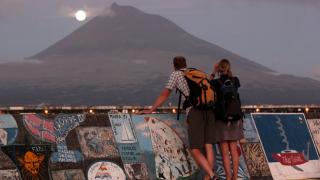
Don't miss
- take a picture of one of the island’s symbols - the mills
- visit the Botanical Garden of Faial, at Quinta de São Lourenço, in the Flamengos valley
Faial is located in the central group of the Azores archipelago, and is part of the so called "triangle islands", together with São Jorge and the neighbouring Island of Pico, separated by the Faial Channel, a narrow sea inlet about 8 km wide.
The Island covers an area of about 172km2, and is 21km long, with a maximum width of 14km. It was discovered in 1427 and colonised in 1432 by a number of Flemish settlers. It was given the name Faial because there are many beech trees here (faias), but no other island can boast such a huge mass of hydrangeas in different shades of blue, which frame the houses, separate the fields and border the roads, justifying the nickname Blue Island.
Faial underwent considerable development from the 17th century on, making it an important trading post due to its geographical position as a safe haven between Europe and the Americas. More recently it was the communications hub between the continents and today is a mandatory point of reference for international yachting.
The highest point is Cabeço Gordo, in the centre of the island, at 1,043m above sea level. It is a magnificent natural viewpoint which in fine weather enables you to see all the islands of the triangle and as far as Graciosa.
Close by lies a huge crater called Caldeira, about 2km in diameter and 400m deep. It is surrounded by blue hydrangeas and lush vegetation, amongst which cedars, junipers, beeches, ferns and mosses stand out, and some of which are important examples of the original vegetation of the island. This area, the Faial Natural Park, was the first Portuguese tourist destination awarded the EDEN prize (European Destination of Excellence).
Its geographic situation provides the city of Horta with unbeatable views of the island of Pico and sometimes S. Jorge. It is flanked by Ponta da Espalamaca and Monte da Guia, whose viewpoints, together with those on Monte Carneiro, offer rich panoramic views over city and the immensity of the sea.
At the western end of the island, the majestic Capelinhos Volcano is witness to the last volcanic eruption in the Azores during 1957 and 1958, which added new earth to the existing land. Entering this area is like landing on a lunar surface. You can visit the Interpretation Centre here, equipped with the most modern presentation and multimedia techniques. A visit to this centre ends with a climb to the top of the lighthouse for an unparalleled visual and emotional experience.
The Capelo road, en route to the south coast, offers one of the most beautiful panoramas on Faial - Varadouro – a beautiful bay, dominated by the jagged black rocks of the Castelo Branco hill, vineyards and flowers. This holiday area par excellence has a number of pools formed by crevices in the volcanic basalt rocks and hot springs.
The North Coast offers a succession of panoramic views. Access to this area is from Horta, following the coastal road via Praia do Almoxarife and the town of Pedro Miguel. Further on, you come across Ribeirinha, Cedros and Ribeira Funda, and you continue on the same road to get to Praia do Norte, where the Costa Brava viewpoint, 320m above sea level, overlooks Fajã. Next, Fajã da Praia and Norte Pequeno offer a contrast between the fields of black lava and the lush vegetation.
Castelo Branco and Feteira, on the south coast, provide breathtaking scenery of the island of Pico. Near Horta, Lajinha and Ponta Furada are notable for their sulphur pits and curious lava arches.
Nowadays the Island of Faial is a perfect destination for all nature lovers, and its marina in Horta is one of its greatest features – a welcoming place, through which the most diverse nationalities and cultures have passed for many years.
Horta, a picturesque little town, has a lot to visit. The churches of São Salvador, Nossa Senhora da Carmo and S. Francisco (including the Museum of Sacred Art and the Horta Museum) are just a few examples.


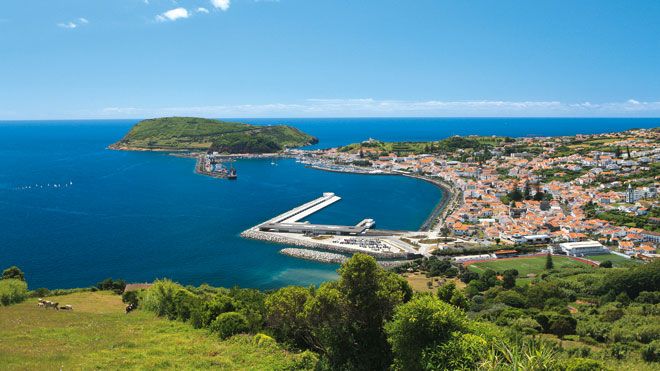








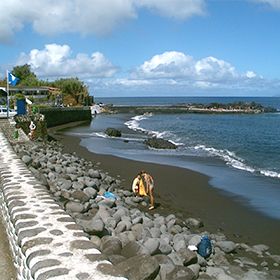
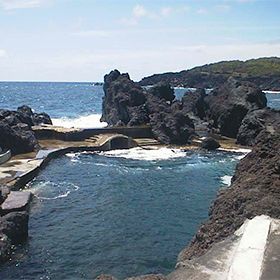

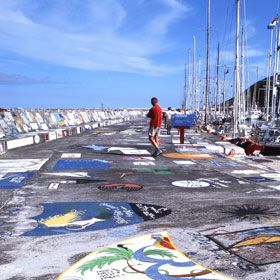
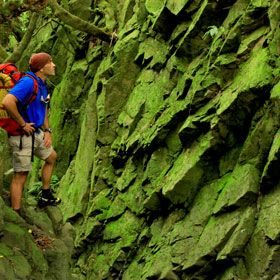
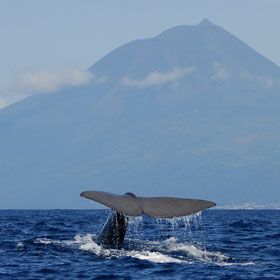



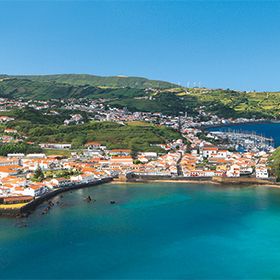

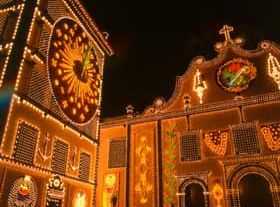
 Explore
Explore 
 Remember and Share
Remember and Share 


